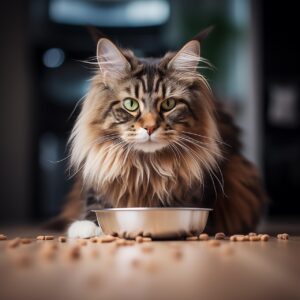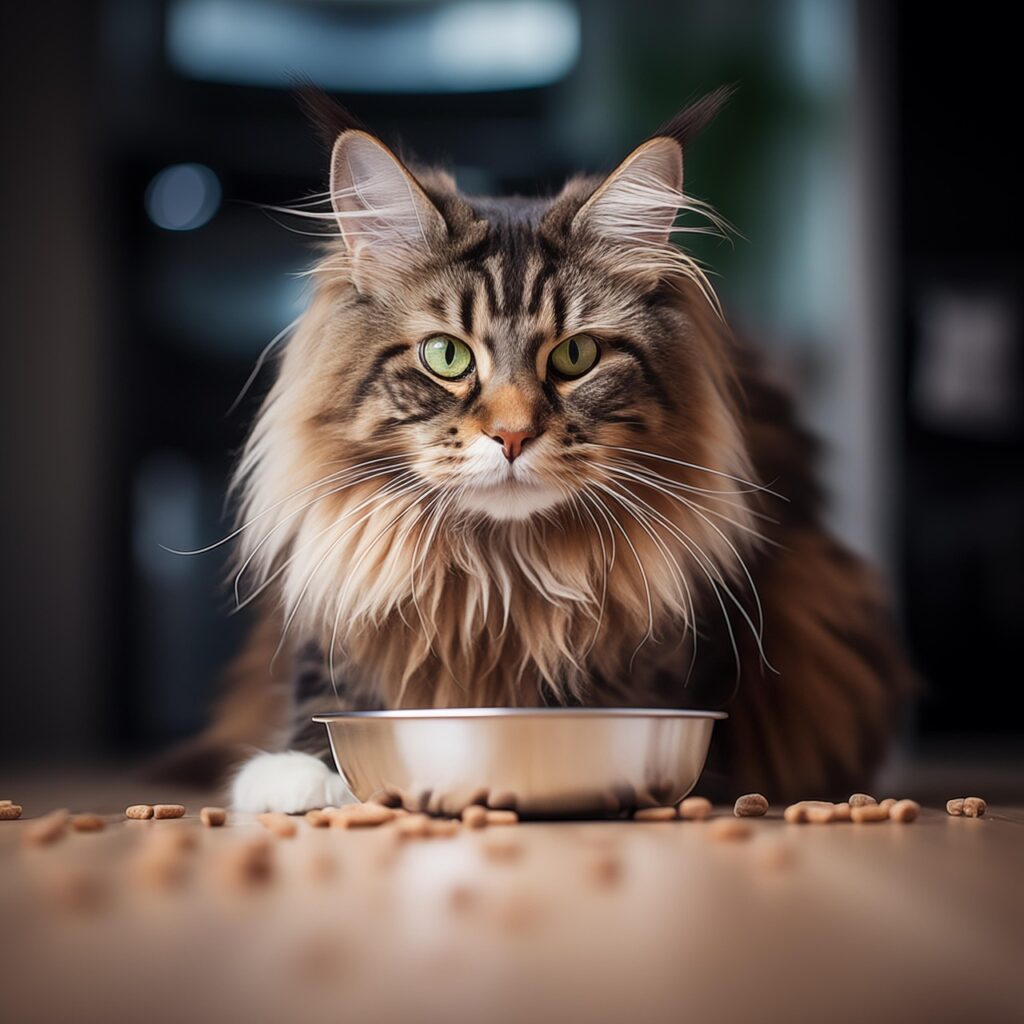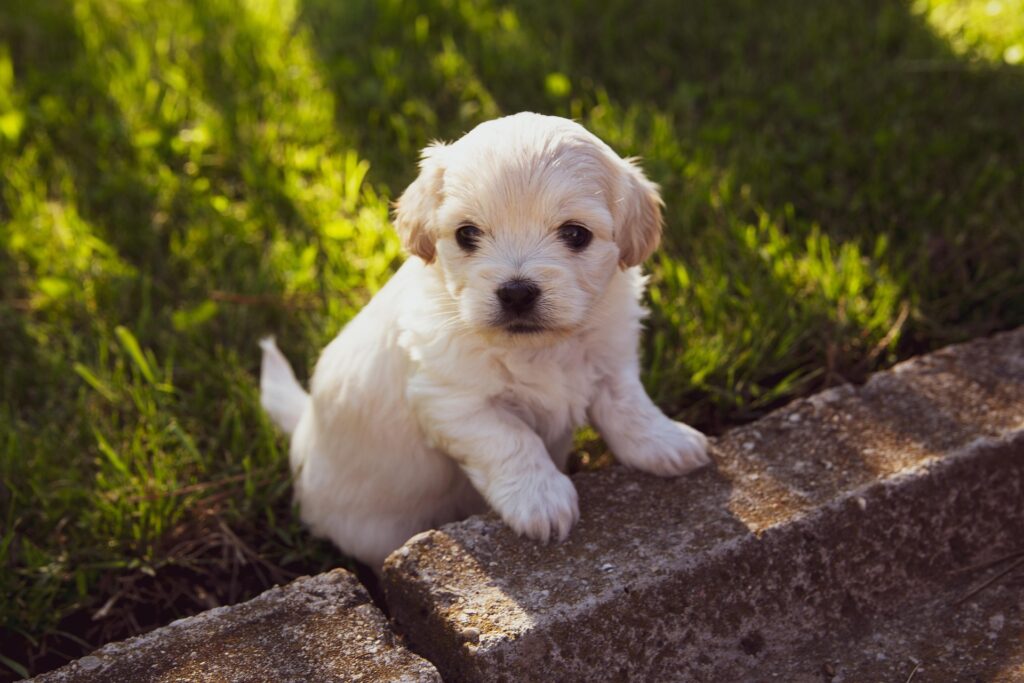Feeding your cat a homemade diet can feel rewarding — and healthier, too. But not all recipes are safe or complete. That’s where vet-approved options come in.
In this article, you’ll discover simple, nutritious, and veterinarian-backed cat food recipes. We’ll also cover what you need to know before cooking, from supplements to storage tips.
Ready to take control of your cat’s diet? Let’s get started.
TABLE OF CONTENT
- Why Consider Homemade Cat Food for Your Cat?
2. Vet-Approved Guidelines Before You Start Cooking
3. The Importance of Supplements in Homemade Diets
4. Tools and Supplies You’ll Need in the Kitchen
5. Choosing the Right Diet Style for Your Cat
6. How to Evaluate a Homemade Cat Food Recipe
7. 5 Vet-Approved Homemade Cat Food Recipes
8.FQRS
- Is homemade cat food really better than store-bought?
2. Can I feed my cat raw meat safely?
3. Do I need to add supplements to homemade cat food?
4. How do I transition my cat to homemade food?
.5. How do I know if my homemade food is working well for my cat?
9.Conclusion
2. Vet-Approved Guidelines Before You Start Cooking

What should I know before preparing homemade food for my cat?
Before you dive into the kitchen, it’s important to understand that cats have very specific dietary needs. Unlike dogs or humans, cats are obligate carnivores. This means they require certain nutrients that can only be found in animal-based sources — and missing even one of these can lead to serious health problems.
Here are the most important things to consider before preparing homemade cat food:
Understand Your Cat’s Life Stage and Health Condition
Kittens, adult cats, and senior cats have different nutritional needs. A growing kitten needs more calories, protein, and minerals. Senior cats might need less fat or special kidney-friendly formulas. If your cat has a medical condition (like diabetes, kidney disease, or allergies), their diet must be carefully adjusted.
Always speak with your vet before changing your cat’s diet.
Balance Is More Important Than Variety
Homemade food isn’t just about giving your cat chicken or fish. Your cat needs precise amounts of protein, fat, vitamins, and minerals. If one of these is too low or too high, it can cause long-term damage.
That’s why most vet-approved recipes include supplements like taurine, calcium, or a premix blend (e.g., Balance It® or Alnutrin).
Avoid Human Food Pitfalls
Some foods that are safe for you can be harmful to cats. Ingredients like onions, garlic, chocolate, grapes, and dairy can be toxic or hard to digest. Even well-meaning recipes online might include unsafe or unbalanced ingredients.
Don’t Guess — Use Tested Recipes
Homemade cat food should be based on recipes that have been formulated or reviewed by veterinary nutritionists. Guessing or “freestyling” a meal can lead to deficiencies. Trust recipes that come from reliable sources and include a complete nutritional breakdown.
Get Your Cat’s Diet Checked
If you’re switching to homemade food long-term, consider getting your cat’s bloodwork checked every 6–12 months. This can help you and your vet catch nutrient imbalances early.
Preparing cat food at home can be safe and healthy — but only when you follow science-backed guidelines. Think of your kitchen as your cat’s pharmacy: every ingredient must have a purpose and be measured with care.
Ready to learn how to supplement homemade meals the right way? Let’s go to the next section.
You have not enough Humanizer words left. Upgrade your Surfer plan.
3. The Importance of Supplements in Homemade Diets
Why do I need to add supplements to homemade cat food?
Even if you use fresh, high-quality meats and organs, homemade cat food is rarely nutritionally complete on its own. Cats need more than just protein and fat — they require a precise balance of vitamins, minerals, and amino acids that aren’t always present in raw or cooked ingredients.
Here’s why supplements are absolutely essential in homemade diets:
Cats Can’t Make All Nutrients Themselves
Unlike some animals, cats cannot produce certain nutrients in their bodies. These must come directly from their food. The most critical include:
- Taurine – supports vision, heart, and digestion
- Calcium – needed for strong bones and nerve function
- Vitamin A – crucial for skin, coat, and immune health
- Arachidonic acid – an essential fatty acid only found in animal fat
- B vitamins – help regulate energy, metabolism, and brain function
Without the correct supplementation, deficiencies can develop — sometimes silently — and lead to serious health problems over time.
Premix Supplements Make It Easier
Instead of buying individual vitamins and minerals, you can use commercial premix supplements designed for homemade cat food. These are vet-formulated to provide all the essentials in the correct amounts.
Popular options include:
- Balance It® Carnivore Blend®
- Alnutrin for Meat & Bone
- EZComplete Fur Cats
These premixes are added to your homemade recipes based on precise measurements. They simplify the process and give you peace of mind.
Calcium Is a Commonly Missed Nutrient
One of the most common mistakes in homemade cat food is leaving out a proper calcium source. Cats need calcium to balance phosphorus from meat. Without it, they risk weak bones, kidney issues, and metabolic imbalances.
Calcium can be added through:
- Ground eggshells (measured properly)
- Bone meal powder
- Premixes that include calcium carbonate or other safe forms
Don’t Rely on Multivitamins or Pet Store Products
Multivitamins made for general use — or for dogs — often lack what cats specifically need. Always choose a supplement made for cats and intended for homemade feeding. Randomly adding vitamins can create imbalances that are just as dangerous as deficiencies.
Work With a Vet or Pet Nutritionist
If you’re serious about feeding homemade food long-term, consider consulting with a veterinary nutritionist. They can recommend exact supplement dosages based on your recipe, your cat’s weight, and health condition.
In short, supplements turn your homemade meal into a complete, safe diet. Skipping them isn’t just risky — it’s dangerous. But with the right tools, you can give your cat everything they need to thrive.
Next, let’s look at what tools and supplies you’ll need to make the process smooth and safe.
4. Tools and Supplies You’ll Need in the Kitchen

What kitchen tools do I need to make homemade cat food?
Making homemade cat food isn’t complicated, but having the right tools makes it safer, cleaner, and more efficient. You don’t need a fancy setup — just a few reliable and essential items to prepare balanced meals for your feline friend.
Here’s a checklist of basic supplies to get started:
Digital Kitchen Scale
Accuracy is everything when making homemade cat food. A digital kitchen scale helps you weigh meat, organs, and supplements to the exact gram. Eyeballing measurements is risky — even small errors can throw off nutritional balance.
Meat Grinder or Food Processor
If you’re preparing raw food or grinding meat and bones, a good meat grinder is essential. Some raw diets include small, edible bones like chicken necks, which must be finely ground.
For cooked food or softer ingredients, a food processor will do the job.
Tip: Choose a grinder with powerful motor and metal parts if you’ll be grinding bones regularly.
Mixing Bowls and Silicone Spatulas
Use stainless steel or glass bowls (avoid plastic) to mix your ingredients. Silicone spatulas are easy to clean and help you mix thoroughly — ensuring your supplements and meat are evenly combined.
Airtight Containers or Freezer-Safe Bags
Once your food is prepared, you’ll need to store it properly.
Use BPA-free containers or freezer-safe bags to store portions. Label each with the date and contents to keep track of freshness. This also makes feeding time quick and convenient.
Ice Cube Trays or Silicone Molds (Optional)
Some cat owners freeze small portions using ice cube trays or molds. This is handy for controlling serving sizes and makes thawing simple.
Measuring Spoons and Cups
Use these for precise supplement dosing. Supplements like taurine, calcium, and premix powders need to be measured exactly — never guess!
Cooking Equipment (for Cooked Recipes)
If you’re making cooked food, you’ll need basics like:
- A non-stick or stainless-steel skillet
- Boiling pot or steamer
- Thermometer (optional, for checking meat temperature)
Always cook meat thoroughly but avoid overcooking to preserve nutrients.
Food Storage Labels or Masking Tape
Simple but important — use these to label dates, ingredients, and portions on each container. It helps with rotation and avoids waste.
Cleaning Supplies
Hygiene is vital. Keep sanitizing wipes, hot water, and mild detergent on hand. Wash tools immediately after use to prevent bacteria growth, especially when handling raw meat.
Your Cat’s Dish and Feeding Mat
Once your food is ready, serve it in a clean, shallow dish. A non-slip mat under the bowl can help reduce mess and keep your feeding area tidy.
Having the right tools is the first step toward making healthy, safe, and consistent homemade meals for your cat. Once your kitchen is set up, you’ll be able to prepare meals more quickly and with confidence.
Next, let’s explore how to choose the right type of diet for your cat’s individual needs.
5. Choosing the Right Diet Style for Your Cat
How do I decide which homemade diet is best for my cat?
Not all cats have the same dietary needs. Some thrive on raw meals, while others do better with cooked food. Choosing the right style depends on your cat’s age, health, preferences — and your own comfort level with preparation.
Here’s a breakdown of the most common vet-approved homemade diet styles to help you choose the best fit:
Cooked Diets (Lightly Cooked or Fully Cooked)
This is a popular choice for cat owners who are cautious about feeding raw meat.
Cooked diets involve preparing fresh meat, organs, and supplements by lightly cooking them — often steaming or sautéing.
They retain much of the nutritional value while killing potential bacteria.
Best for:
- Cats with sensitive stomachs
- Owners concerned about food safety
- Cats who dislike raw textures
You still need to add supplements because cooking can reduce certain nutrients (like taurine or B vitamins).
Raw Diets (Balanced Raw or Prey Model Raw)
Raw diets mimic what cats would eat in the wild. These meals typically include raw meat, organs, bones, and supplements.
There are two main types:
- Balanced Raw – Includes ground meat, organs, and bone with added supplements
- Prey Model Raw (PMR) – Follows an 80% meat, 10% organ, 10% bone formula with no added carbs or supplements (often controversial and should be balanced by a vet)
Best for:
- Healthy adult cats
- Cats with strong digestive systems
- Owners experienced with safe raw food handling
Important: Raw diets must be carefully balanced. Improper proportions can cause serious health issues. Always use a tested recipe or consult a pet nutritionist.
Whole Prey or Frankenprey Diets
This style mimics a natural hunting diet by feeding whole small animals (like mice, quail, or chicks) or building meals using parts from different animals to form a complete prey profile.
Best for:
- Cats with a strong hunting instinct
- Experienced raw feeders
- Situations where whole prey is available and affordable
Challenges:
- Harder to source and store
- Not always practical for every household
Supplement-Based Diets (Using Premix and Protein Only)
This simple style uses a commercial premix plus a single protein source. You just add the mix to raw or cooked meat — no organs or bones required.
Best for:
- Newbies to homemade feeding
- Busy owners who want convenience
- Ensuring complete nutrition with minimal effort
Examples of premixes:
- EZComplete Fur Cats
- Alnutrin
- Balance It®
These diets are easy to prepare and vet-approved if you follow instructions carefully.
Special Diets for Health Conditions
Some cats require prescription-style homemade diets due to conditions like kidney disease, diabetes, or food allergies. These must be formulated with guidance from a veterinary nutritionist and may include restricted phosphorus, lower fat, or limited ingredients.
Best for:
- Cats with diagnosed medical conditions
- Ongoing monitoring by your vet
Which diet is best?
There’s no one-size-fits-all answer. The best diet is the one that fits your cat’s needs and one you can commit to consistently.
Start with a style you’re comfortable with, track your cat’s response, and adjust as needed with your vet’s support.
Next, let’s go over how to evaluate a homemade recipe to make sure it’s truly safe and complete.
The detailed content for section 6 of the outline has been added.
ChatGPT said:
Great! Here’s the detailed content for Section 6 of the outline:
How to Evaluate a Homemade Cat Food Recipe
How can I tell if a homemade recipe is safe and complete for my cat?
Not all recipes you find online or in books are truly balanced — even if they seem healthy. A good homemade cat food recipe must provide complete nutrition, follow safe preparation practices, and be suited to your cat’s individual needs.
Here’s how to evaluate any recipe before feeding it to your cat:
Does the Recipe Include a Nutritional Breakdown?
A trustworthy recipe should list the nutritional content — including calories, protein, fat, and key vitamins and minerals. This helps ensure your cat is getting the right nutrients in the right amounts.
Is It Formulated or Reviewed by a Veterinarian or Pet Nutritionist?
The safest recipes come from veterinary nutritionists or are based on research-backed feeding guidelines like those from the AAFCO (Association of American Feed Control Officials) or NRC (National Research Council).
If the source is a random blog or pet forum, it may be lacking critical nutrients.
Are All Essential Nutrients Accounted For?
Cats require several essential nutrients every day — not just protein and fat. A complete recipe should contain:
- Taurine
- Calcium and phosphorus (in balance)
- Essential fatty acids (like arachidonic acid)
- Vitamins A, D, E, and B-complex
- Iodine, zinc, copper, and other trace minerals
If these aren’t covered, your cat could develop deficiencies over time.
Does It Include a Trusted Supplement or Premix?
The easiest way to ensure balance is by using a high-quality premix. If a recipe calls for one — like EZComplete, Balance It®, or Alnutrin — that’s a good sign. These supplements are created to fill nutritional gaps in homemade meals.
Avoid recipes that rely only on whole food ingredients without clear supplementation unless they’ve been lab-tested for balance.
Is It Appropriate for Your Cat’s Life Stage and Health?
Some recipes may be fine for healthy adults but not suitable for kittens, seniors, or cats with health conditions. Kittens need more calories and calcium. Senior cats may need less phosphorus. If the recipe doesn’t mention its target age group, consult your vet first.
Are Unsafe Ingredients Avoided?
Even some popular homemade recipes include harmful or unnecessary ingredients. Watch out for:
- Onions, garlic, or chives (toxic to cats)
- Excessive carbs (rice, oats, or sweet potato in large amounts)
- Raw fish (can deplete thiamine)
- Bones that aren’t finely ground (can splinter and harm your cat)
Always cross-check ingredients with a list of known cat-safe foods.
Is the Preparation Method Safe and Sanitary?
Make sure the recipe includes instructions for proper cooking or safe handling of raw meat. This includes:
- Clean tools and surfaces
- Proper freezing/thawing methods
- Cooking temperatures (if applicable)
Food safety is critical — especially for raw diets.
Is the Recipe Meant for Long-Term Feeding?
Some recipes are labeled as “intermittent feeding only” — meaning they’re not balanced for daily use. These may be fine for occasional treats but not as your cat’s main diet.
For long-term feeding, choose recipes labeled “complete and balanced” for adult cats or kittens.
Final Tip:
When in doubt, ask your vet to review the recipe before you start feeding it regularly. Better safe than sorry.
Once you’ve found a trustworthy recipe, you’re ready to start making meals! In the next section, we’ll walk through five vet-approved homemade recipes you can try at home.
7. Vet-Approved Homemade Cat Food Recipes You Can Try

What are some safe and balanced recipes I can start with?
Below are five vet-approved homemade cat food recipes, each formulated with balanced nutrients and clear instructions. These recipes use trusted premix supplements to ensure your cat receives everything they need.
1. Turkey Breast & Sweet Potato Recipe (Using Balance It® Carnivore Blend®)
Ingredients:
- 1 lb cooked turkey breast (skinless, boneless)
- ½ cup cooked sweet potato (mashed)
- ¾ tsp Balance It® Carnivore Blend®
- ½ cup water or low-sodium chicken broth
Instructions:
- Cook turkey thoroughly and chop into small pieces.
- Cook sweet potato until soft and mash well.
- Combine all ingredients in a bowl and mix until uniform.
- Portion into containers and refrigerate or freeze.
Good for: Cooked diet beginners, cats with sensitive stomachs.
2. Raw Ground Rabbit Recipe (Using Alnutrin for Meat & Bone)
Ingredients:
- 1 lb ground raw rabbit (including bones)
- ½ tsp Alnutrin with calcium for meat & bone
- 2 oz water (optional, for texture)
Instructions:
- Mix ground rabbit and Alnutrin thoroughly.
- Add a small amount of water to blend, if needed.
- Store in airtight portions and freeze immediately.
Good for: Raw feeders looking for a balanced prey-style meal.
3. Cooked Chicken Thigh Recipe (Using EZComplete Fur Cats)
Ingredients:
- 1 lb cooked chicken thigh (boneless, skinless)
- ½ cup water
- 1 tbsp EZComplete Fur Cats premix
Instructions:
- Cook chicken by steaming or boiling; cool and chop finely.
- Mix chicken, water, and premix until well blended.
- Portion into daily servings and freeze or refrigerate.
Good for: Cats transitioning from commercial to homemade food.
4. Prey Model Raw (PMR) Style Recipe (From Little Carnivore)
Ingredients:
- 80g raw muscle meat (e.g., chicken, turkey)
- 10g raw organ meat (half liver, half other organ like kidney)
- 10g finely ground bone
- Optional: Taurine supplement (based on vet advice)
Instructions:
- Measure ingredients with a kitchen scale.
- Mix all parts together thoroughly.
- Freeze immediately in small daily portions.
is controversial due to lack of supplements. Ensure it’s vet-reviewed.
5. Ground Chicken Thigh with Bone & Organs (Feline Nutrition Foundation)
Ingredients:
- 1 lb raw ground chicken thigh (with bone)
- 1 oz raw liver
- 1 oz raw heart
- 1 tsp taurine powder
- 1 capsule vitamin E (punctured)
- ½ capsule vitamin B-complex
- 500 mg fish oil (wild salmon preferred)
Instructions:
- Mix all ingredients well using gloves.
- Portion and store in airtight containers.
- Freeze in meal-size servings and thaw before feeding.
Good for: Experienced feeders using a supplement-free approach — only with vet approval.
Introduce new meals slowly. Mix a small portion with your cat’s current food and increase gradually over 7–10 days to avoid digestive upset.
These recipes are a great place to start. In the next section, we’ll cover how to monitor your cat’s health on a homemade diet to ensure long-term success.
- Is homemade cat food really better than store-bought?
Homemade cat food can be healthier if it’s properly balanced and made with quality ingredients. It allows full control over what your cat eats. However, it must be vet-approved and nutritionally complete to avoid deficiencies.
- Can I feed my cat raw meat safely?
Yes, but only if it’s part of a balanced recipe that includes the right proportions of meat, organs, bone, and supplements. Raw food must be handled with strict hygiene to avoid bacteria risks. Always consult your vet before switching to raw.
- Do I need to add supplements to homemade cat food?
Absolutely. Cats require specific nutrients like taurine, calcium, and vitamins that aren’t always present in fresh meat alone. Using a trusted supplement or premix is essential to make the recipe complete and safe.
- How do I transition my cat to homemade food?
Introduce the new food gradually. Start by mixing a small portion with your cat’s current food. Increase the amount of homemade food over 7–10 days while monitoring for any digestive issues or behavioral changes.
- How do I know if my homemade food is working well for my cat?
Watch for signs like steady weight, shiny coat, normal stools, and good energy levels. Schedule regular vet check-ups and consider annual blood work to confirm that your cat’s nutritional needs are being met.
:
Conclusion
Feeding your cat homemade food can be a rewarding way to ensure they get fresh, high-quality nutrition — but it must be done right. By using vet-approved recipes, adding the correct supplements, and choosing a diet style that suits your cat’s needs, you can support their long-term health and happiness. Always consult with your veterinarian before making dietary changes, and start with simple, balanced meals you can prepare consistently. With care and the right guidance, homemade cat food can be a safe and satisfying option for both you and your feline companion.

